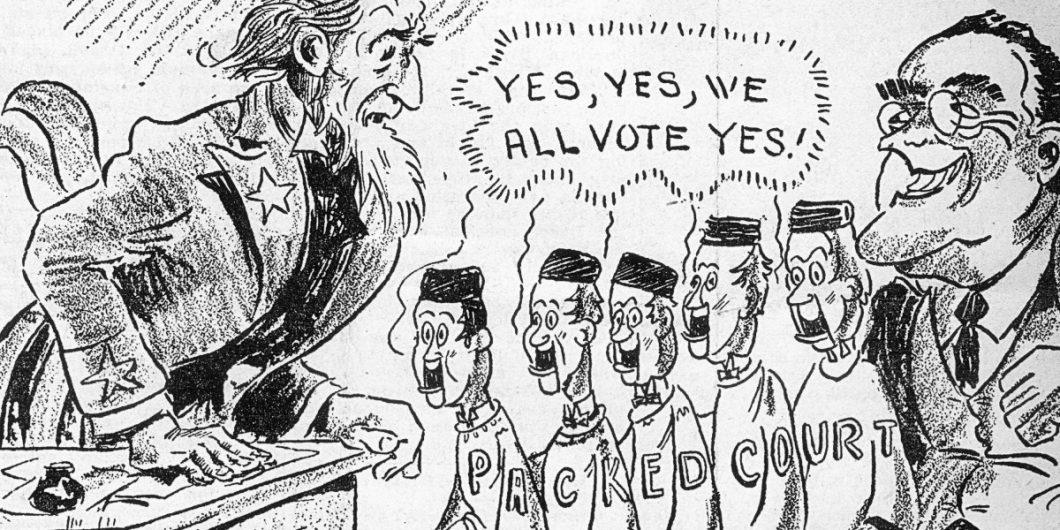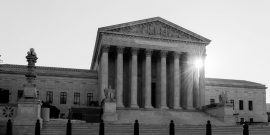Reclaiming Legislative Power from the Administrative State
Viewed in historical perspective, the Supreme Court’s decision in West Va. v. EPA last month can be seen as a restoration of the Framers’ original constitutional vision, after more than a century of progressivism.
The progressives of the 1880s, led by Woodrow Wilson and Theodore Roosevelt, wanted major changes in the structure of the US government. Wilson argued that the government was hamstrung by the separation of powers: “[N]o government,” he wrote, “can be successfully conducted upon so mechanical a theory… the whole art of statesmanship is the art of bringing the several parts of government into effective cooperation for the accomplishment of particular objects.”
But Wilson’s criticism was misplaced. What he and the progressives did not understand was that the government conceived by the Framers was not designed for the “accomplishment of particular objects,” but—through the separation of powers—to preserve the liberties of the American people from the depredations of the government itself. As Madison famously noted in Federalist 51, “In framing a government which is to be administered by men over men, the great difficulty lies in this: you must first enable the government to control the governed; and in the next place oblige it to control itself.” By dividing the government’s functions among a Congress, an executive and a judiciary, the Framers attempted to ensure that the government would function effectively but not so efficiently that it would threaten the people’s liberties.
With Wilson’s election as president in 1912, progressive views became dominant, manifested largely through the creation of many administrative agencies—the Federal Trade Commission and the Federal Reserve are examples during the Wilson administration—and new powers for the cabinet departments.
Three Republican presidents followed Wilson in 1920, and the country returned briefly to “normalcy” between 1920 and 1930. However, with the advent of the Great Depression, a Democratic president, Franklin Delano Roosevelt, was elected in 1932. Many of the members of the progressive movement begun by Wilson then returned to positions of authority in the Roosevelt administration.
To deal with the Great Depression of the 1930s, the Democratic Congress passed many laws creating new administrative agencies like the SEC, NLRB, and the FCC, and authorizing the cabinet departments to issue many new regulations in agriculture, labor and other sectors of the U.S. economy.
However, while the executive branch of the government and its policies changed quickly with the election of FDR, seven members of the Supreme Court had been appointed by Republican presidents and did not change during the first FDR term. Most of them—even liberal Justices Brandeis and Cardozo—held predominantly traditional views of the Constitution and its implied preference for the liberty of the people over the effectiveness of administration.
Implicit here was a prescription for conflict. After many Supreme Court decisions overturning FDR’s policies, the decisive moment came in 1935 when the Supreme Court declared that the National Industrial Recovery Act was unconstitutional because it delegated too much legislative authority to the president. Even Justice Cardozo, considered one of the liberals on the Court, called it “delegation run wild.”
Nevertheless, Roosevelt won a smashing victory in the election of 1936, and immediately proposed to “pack” the Supreme Court by appointing more justices. Although he had the majorities in Congress to effect this change, it was widely opposed by the American people and failed to pass.
Still, the members of the Court understood the gravity of the threat and tempered their position on many of the laws thereafter enacted by the Democratic Congress. The members of the 1935 Court then began to resign, and between 1935 and 1941 FDR was able to appoint eight new justices, almost all of whom were born and came to maturity during the progressive era.
Because the courts give significant weight to precedents, the patterns set down by the new FDR Supreme Court were imprinted on the decisions of later justices. So much so, that in 1984, the Court unanimously adopted the so-called Chevron doctrine, which held that where legislative language was ambiguous the reviewing court should defer to the view of the administrative agency—if that view was “reasonable.” In other words, as late as 1984, the Supreme Court was following the progressive idea that administrative agencies were better able to interpret and implement congressional intent than courts.
Although many will see West Va. v. EPA as the Court flexing its conservative muscles, it is better seen as an attempt by the Court to restore the original constitutional structure in which Congress makes the policy decisions that underlie the laws.
Nevertheless, reforms were developing within the judiciary for more refined methods of interpreting the Constitution and laws. The most important was “originalism,” in which the Court would interpret the meaning of the Constitution by divining what its words meant when the Constitution and the various amendments were drafted. Another reform was textualism, which meant focusing on the plain words of the statute, without consulting committee reports or floor statements by sponsors of legislation. These new approaches narrowed the scope of judicial interpretation, limiting the enticement to base a decision on policy grounds.
Now, with a Supreme Court more focused on constitutional or statutory language, even Chevron—which told lower courts to defer to agencies’ interpretation of their powers—is under threat. In a 2013 case where the majority endorsed Chevron, Chief Justice Roberts—joined by Justices Kennedy and Alito—dissented, quoting Chief Justice Marshall in the famous case Marbury v. Madison: “It is emphatically the province and duty of the judicial department to say what the law is.” The meaning here was unmistakable: the courts, and not administrative agencies, should be interpreting statutes. It also meant that the separation of powers and its contribution to liberty interests might be paramount in the future, rather than “the accomplishment of particular objects.”
In West Va. v. EPA, where the Court was called upon to interpret the authority Congress had given to the EPA, the majority did not even cite Chevron, or bother to explain why it was ignored. In other words, Chevron—once a bill of rights for the administrative state—was quietly but clearly laid to rest. In its place, the Court cited and knighted a completely opposite concept—the so-called “major questions doctrine”—which holds simply that where an administrative agency makes an important and far-reaching decision that is not clearly based on its statutory authority, it will bear a significant burden to prove that its interpretation was authorized by Congress. So much for the Chevron deference.
In sum, we may now have entered a new era; one where a conservative Supreme Court majority seems ready to take back from administrative agencies the power to define what Congress has or has not said in legislation. To most observers this might seem logical; the judiciary was always intended to interpret the laws made by Congress. But in fact, for many years Congress has passed the difficult policy questions to administrative agencies, and these non-elected officials have made the policy decisions. This is not what the Framers intended or what is appropriate for a democratic republic.
Although many will see West Va. v. EPA as the Court flexing its conservative muscles, it is better seen as an attempt by the Court to restore the original constitutional structure in which Congress makes the policy decisions that underlie the laws. In doing so, it will end a century of judicial support for a form of progressivism that has driven the growth of the administrative state.



